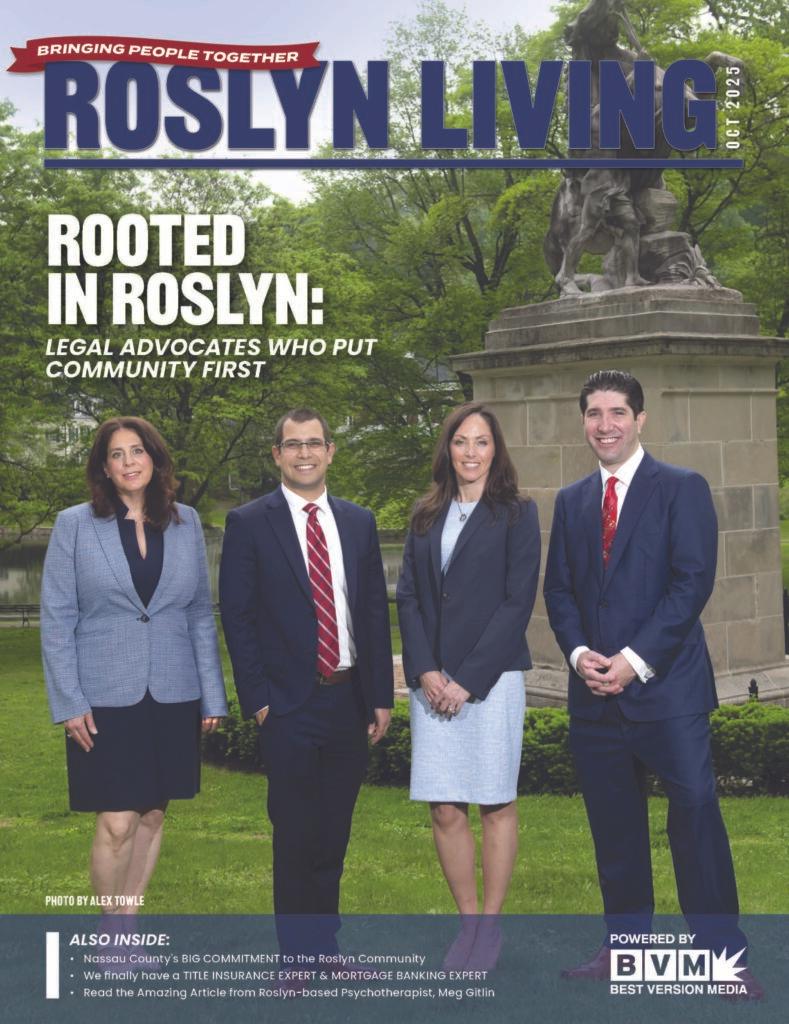By Moriah Adamo, Randy Breidbart, Sharon Kovacs Gruer, Felicia Pasculli, Joan Lensky Robert and Fred S. Sganga
Moriah Adamo, an associate at Abrams, Fensterman, Fensterman, Eisman, Formato, Ferrara & Einger, LLP, represents nursing facilities and individuals in all aspects of securing third party benefits, including Medicaid. She focuses her practice on formulating asset protection strategies, applying for Medicaid, initiating and pursuing appeals of Medicaid denials, including drafting reconsideration applications, preparing for and advocating for appellants at Fair Hearings and Article 78 proceedings.
Randy M. Breidbart has been the president of the financial planning firm, Park Avenue Financial Advisors LLC since 1991. Mr. Breidbart has served on New York Bar Association committees and has trained new attorneys on basic Elder Law practice. He has been a contributing author to NYSBA publications, Boardroom Reports, Fortune Small Business and Financial Planning Magazine. He earned his J.D. from the University of Buffalo School of Law.
Sharon Kovacs Gruer ([email protected]), holds a Masters of Law in Taxation (LL.M.) from New York University, is Immediate Past Chairperson of the New York State Bar Association Elder Law Section and is certified as an elder law attorney by the American Bar Association’s accredited National Elder Law Foundation.
Felicia Pasculli concentrates her practice in the areas of elder law, trusts and estates, and veterans law. She is certified as an elder law attorney by the ABA accredited National Elder Law Foundation. She serves as Chair of the newly created Veterans Benefits Committee of the Elder Law Section of the New York State Bar Association. A founder of the Long Island Alzheimer’s Foundation, she presently chairs its Legal Advisory Board.
Joan Lensky Robert ([email protected]) is a partner at Kassoff, Robert & Lerner LLP in Rockville Centre, New York, practicing in the area of elder law and special needs planning. Ms. Robert is a graduate of Skidmore College and of the University of Pennsylvania Graduate School of Arts and Sciences. She received her law degree from Touro College School of Law, summa cum laude.
Fred S. Sganga, FACHA, LNHA, is the Executive Director of the Long Island State Veterans Home at Stony Brook University – a 350-bed Skilled Nursing Facility and a 40-slot medical model Adult Day Health Care program for honorably discharged veterans and their spouses. Mr. Sganga is President of the National Association of State Veterans Homes.
The authors thank Vincent Sommella, a law clerk at Kassoff, Robert & Lerner, LLP, for his contributions to this article.
Introduction
The national debate over health insurance that resulted in the enactment of the Affordable Care Act 1 did not, in large part, address the long-term care needs of seniors and persons with disabilities. At least 70% of people over age 65 will require long-term care services at some point in their lives, whether it is support services for the activities of daily living or nursing home care. 2 People who reach age 65 will face a 40% chance of entering a nursing home. 3 The cost of nursing home care may exceed $150,000 a year. 4 Paying for long-term health care costs is a challenge facing not only seniors and those with disabilities but our society at large. This article presents a brief overview of the government entitlements and long-term care insurance options, followed by a discussion of the legislative proposals that address the financing of long-term care.
Medicare 5
Medicare provides only limited coverage of extended care. 6 Medicare is an entitlement program available to those over the age of 65 or those under the age of 65 who have been receiving Social Security Disability benefits for two years. 7 Generally, Medicare pays only for skilled care either at home or in a skilled nursing facility. 8 In either case, the normal prerequisite is a qualifying hospital visit. 9 Additionally, in order to receive care at home, a physician must certify that the individual is homebound and needs only intermittent skilled care. 10 Should the individual require a higher level of care, then Medicare will cover in full the cost of the first 20 days of a stay at a skilled nursing facility. 11 Days 21 through 100 will be covered, subject to a co-payment, assuming the individual continues to benefit from restorative treatment, such as physical or occupational therapy. 12
Pressure to reduce the federal Medicare budget has resulted in privatization of a significant portion of the administration of the Medicare program. 13 Medicare Advantage allows private insurance companies to offer traditional insurance products like HMOs and PPOs to Medicare enrollees, as a means to shift the cost of the program. 14 The Medicare Part “D” drug program is also administered by private companies; it offers limited coverage of certain prescription drugs. 15 Each company compiles its own unique formulary, outlining the specific drugs that it will cover. Inherent in the program is a coverage gap, referred as the “donut hole,” which requires full payment of the costs of prescriptions after the threshold coverage is exhausted. 16
Given Medicare’s limitations, many beneficiaries will require alternative payment sources to finance their long-term care needs.
Medicaid 17
While Medicare provides limited coverage for long-term care, Medicaid pays for custodial or skilled care in the community or in a skilled nursing facility. Medicaid, however, is means-tested. In 2011, to be eligible for Medicaid, the recipient may have no more than $13,800 in countable assets. Medicaid also imposes income limitations upon a recipient. When in a nursing home, the Medicaid recipient retains only $50/month in income; in the community, the recipient retains $767/month. 18
If a Medicaid applicant has transferred assets for less than fair market value to those not protected by statute, the government imposes an ineligibility period before it will provide Medicaid coverage in a skilled nursing facility. 19 Not all transfers of assets create ineligibility. The home may be transferred to certain individuals 20 without penalty and, in New York, all assets may be transferred to a spouse 21 without the applicant’s incurring any waiting period for Medicaid benefits. However, although the transfer of assets between spouses does not create ineligibility for Medicaid services, the community spouse with resources above $74,820-$109,560 and/or income above $2,739/month 22 remains vulnerable to paying for the cost of care, even if he or she has “refused” to make such assets available for the medical support of the institutionalized spouse. 23
When a spouse in the community needs Medicaid services at home, the financial rules may be even more limiting. 24 At this time, New York does not impose an ineligibility period for the transfer of assets for Medicaid services in the community. 25 Spousal refusal permits the well spouses of some Medicaid recipients to stay in the community by enabling them to retain sufficient assets to live in dignity. Without spousal refusal, the escalating costs of institutional and/or home care could devour a couple’s income and assets and impair the ability of both spouses to continue living in the community.
Veterans’ Benefits
Veterans and their spouses have access to an array of services that can be an essential component of long-term health care planning. New York alone is home to more than one million living veterans. 26
The United States Department of Veterans Affairs or “VA” has two major functions: providing health care (VHA) and paying benefits (VBA). Veterans should be encouraged to “enroll” 27 at their local VA medical centers, where in addition to acute care services, they can receive low-cost prescription drugs (creditable coverage under Part D), geriatric evaluations, home-based primary care, skilled home health care, homemaker and home health aide services, adult day health care, respite care, hospice and palliative care. 28
When a veteran has a service-connected disability, he or she is paid “compensation” 29 and given priority in terms of services. 30 If the service-connected disability is rated at 70% or more, the VA is responsible for the veteran’s long-term care costs. 31
The VA also offers pension programs that can financially assist veterans or the spouses of deceased veterans, who are low income or whose incomes are being depleted by health care expenses. The applicant does not have to have a service-connected disability, but the veteran must have served active duty during a period of war, have an honorable discharge, be age 65 or older or permanently and totally disabled. 32 Pension enhancements are available for those who are housebound or require aid and attendance (A & A) with activities of daily living. 33 These benefits are monetary and range from a basic pension of $11,830 annually for a single veteran with no dependents to $19,736, if A & A is required. 34
Veterans may also be eligible for admission to New York State-run veterans homes which offer care at a reduced cost when compared with privately run homes. 35 Veterans in these homes who are receiving pensions may retain their entire pension benefit, while receiving Medicaid chronic care coverage. However, those veterans on Medicaid who are in private nursing homes will have their pension benefit reduced to $90, which is disregarded by Medicaid. 36
Dependent and/or disabled children of veterans who are rated 100% disabled, are also eligible for health care coverage from the VA. 37
Attorneys must be accredited by the VA before they may assist claimants in the preparation, presentation, and prosecution of claims for VA benefits. 38
Long-Term Care Insurance
Long-term care insurance provides an alternative to private pay or government entitlements. Long-term care insurance provides a pool of funds to pay for long-term care at home, in an assisted living facility or in a skilled nursing facility. People with long-term care insurance often have more options in securing care, particularly in the community, and will preserve their assets if they do not enroll in the Medicaid program. Long-term care policies contain many variables, including elimination periods, policy caps, daily benefit caps, spousal benefits, etc. In choosing long-term care insurance, one must choose the duration of the policy and decide whether to include an inflation rider. Navigating the changing tides of long-term care policies requires a great deal of expertise.
The three major categories of long-term care policies are reimbursement plans, 39 indemnity plans 40 and cash plans. 41 In addition, New York State offers the Partnership plan, a type of reimbursement plan that provides a long-term care policy to cover long-term care costs and Medicaid eligibility when policy benefits are depleted. 42 A new type is called a hybrid plan, 43 because it provides both a death benefit and a long-term care benefit. The premiums are guaranteed not to increase, and long-term care benefits are paid out as reimbursements; the unused portion is paid as a death benefit to the insured’s beneficiary. These policies address two concerns of policyholders: the potential increase in policy premiums and paying for a long-term care policy that is never used.
All New York state residents who purchase a qualified long-term care insurance policy receive a tax credit on their state tax income tax return for 20% of the costs of the policy in each year. 44 Additionally, sole proprietors, S corps, and LLCs can deduct a certain portion of premium as a health insurance expense. C corporations can deduct the entire premium.
Given continuous political and economic pressure to cut government need-based and entitlement programs, private long-term care insurance is an increasingly useful tool to finance long-term care. So why doesn’t everyone purchase a long-term care policy? First, the long-term care policies are medically underwritten, meaning that not everyone will qualify. Second, the premiums are expensive, and would-be purchasers must evaluate their finances to ascertain that they will be able to pay the premiums once they are retired and have a lower income but are more likely to need care. The younger and healthier the individual, the more affordable the policy. Those who are insurable and have sufficient means to pay for these policies should consider long-term care insurance as part of an estate plan.
The CLASS Act 45
The CLASS Act, which is tentatively effective in October 2012, establishes a national, voluntary insurance program for purchasing community living assistance services and supports. The act represents an attempt to establish a hybrid public benefits and long-term care insurance program. Individuals who enroll in the program and pay the requisite premiums are eligible to receive modest cash payments for their long-term care needs. Although a “public” program, Congress explicitly mandated that the CLASS Act be voluntary, not involve public dollars and be solvent for 75 years. 46 Many experts question the willingness and ability of younger individuals to make voluntary payments toward a future medical need. Further, even supporters of the CLASS Act recognize that contributions may be insufficient to cover the promised benefit of a minimum of $50 per day for a lifetime. Although an admirable attempt to address the problems of financing long-term health care, the CLASS Act has significant limitations and falls far short of providing a comprehensive solution.
The Compact for Long-Term Care 47
An alternative long-term care financing demonstration program, known as “the Compact,” is discussed in the sidebar to this article.
Conclusion
Attorneys should be familiar with all the government, veterans and long-term care insurance options when preparing a plan for clients. But, certainly, we need creative solutions and fresh approaches that do not come at the expense of those who are elderly or disabled or impoverish their spouses. It is up to our legislators to open the debate about long-term care, and to seek long-term solutions that will allow our elderly and disabled to live in dignity.
1. Patient Protection and Affordable Care Act, Public Law 111-148 (2010).
2. National Clearinghouse for Long-Term Care Information, U.S. Dep’t of Health and Human Servs (Jan. 31, 2011), http://www.longtermcare.gov/LTC/Main_Site/index.aspx.
3. Brian O. Burwell & Beth Jackson, The Disabled Elderly and Their Use of Long-Term Care, U.S. Dep’t of Health and Human Servs (July 1994), http://aspe.hhs.gov/daltcp/reports/diseldes.htm (discussing the future of our elderly population).
4. The New York State Department of Health lists the average monthly cost of a nursing home in New York City for 2011 as $10,579/month, and on Long Island as $11,445. GIS 11 MA 001, www.health.state.ny.us. See also The Genworth 2010 Cost of Care Survey (2010) (www.genworth.com) assessing the average annual cost for skilled nursing care in New York City at $159,000/year.
5. 42 U.S.C. §§ 1395 et seq.
6. Part A provides coverage for hospitalizations and skilled nursing facilities.
7. 42 C.F.R. § 406.5. Those with End Stage Renal Disease, see 42 U.S.C. § 1395c, and ALS (“Lou Gehrig’s Disease”), see 42 U.S.C. § 426(h), may receive Medicare the first month in which they receive their disability benefits.
8. Medicare Coverage of Skilled Nursing Facility Care, Centers for Medicare & Medicaid Services, available at http://www.medicare.gov/publications/pubs/pdf/10153.pdf.
9. 42 U.S.C. § 1395d(a)(3).
10. 42 U.S.C. §§ 1395f(a)(8); 1395n(a)(2)(A). If a Medicare beneficiary is receiving a skilled service at home, such as a nurse or therapy, a home health aide may be provided for up to 20 hours per week. Medicare generally does not pay for custodial care, which is the assistance with the activities of daily living such as eating, bathing, dressing, transferring and toileting. 42 C.F.R. § 409.40.
11. 42 C.F.R. § 409. Medicare will cover up to 100 days per spell of illness in a skilled nursing facility. 42 C.F.R. § 400.3(e). One must enter a nursing home within 30 days of a three-day hospital stay. 42 C.F.R. § 409.30.
12. 42 C.F.R. § 409.
13. 42 C.F.R. §§ 423 et seq. See definitions of the Medicare parts on Peter Strauss’s article “Happy 65th Birthday,” on page 52.
14. Id.
15. 42 C.F.R. §§ 423 et seq.
16. 42 U.S.C. § 1395w-102(b).
17. 42 U.S.C. §§ 1396 et seq.
18. GIS 10 MA 026, www.health.state.ny.us.
19. The government looks at transactions made within 60 months of applying for benefits in a skilled nursing facility. 42 U.S.C. § 1396p(c)(1)(D); Soc. Serv. Law § 366(5)(e)(5). The cumulative value of transfers made during this “look-back period” is divided by the average cost of a nursing home in the region to determine the number of months of ineligibility caused by the gifts. This transfer penalty period will commence when an individual is receiving nursing home care AND has no excess resources AND has unmet medical needs that exceed his/her income AND files an application for Medicaid, which should be approved but for the transfer penalty. If, for example, one transfers $114,450 while in a nursing home on Long Island, there will be a 10-month ineligibility for Medicaid services in a skilled nursing facility.
20. To a spouse, 42 U.S.C. § 1396p(c)(2)(A)(i), Soc. Serv. Law § 366(5)(e)(4)(i)(A), or to a sibling with an equity interest in the home who has been residing in the home for at least one year immediately before the Medicaid applicant became institutionalized, 42 U.S.C. § 1396p(c)(2)(A)(iii), Soc. Serv. Law § 366(5)(e)(4)(i)(C), or to a care-giving child, i.e., one who has resided in the home for at least two years immediately before the Medicaid applicant became institutionalized and who provided care to him/her so that s/he did not require institutionalization 42 U.S.C. § 1396p(c)(2)(A)(iv), Soc. Serv. Law § 366(5)(e)(4)(i)(D), or to a child who is blind or disabled 42 U.S.C. § 1396p(c )(2)(A)(ii)(II), Soc. Serv. Law § 366(5)(e)(4)(i)(B), or who is a under the age of 21, 42 U.S.C. § 1396p(c)(2)(A)(ii)(I), Soc. Serv. Law § 366(5)(e)(4)(i)(B). All assets may also be transferred or to a disabled child or to a trust for the sole benefit of a disabled child, or to a trust for the sole benefit of any disabled individual under the age of 65.
21. 42 U.S.C. § 1396p(c)(2)(B)(i),(ii); Soc. Serv. Law § 366(5)(e)(4)(ii)(A), (B). All assets may also be transferred to a child with a disability or to a trust for the sole benefit of a child with a disability, 42 U.S.C. § 1396p(c)(2)(B)(iii), Soc. Serv. Law § 366(5)(e)(4)(ii)(C), or to a trust for the sole benefit of any individual with a disability under the age of 65. 42 U.S.C. § 1396p(c)(2)(B)(iv), Soc. Serv. Law § 366(5)(e)(4)(ii)(D).
22. GIS 10 MA 026, www.health.state.ny.us.
23. Federal and NYS law provide that the institutionalized spouse shall not be determined ineligible for Medicaid even if the community spouse has greater resources than the resource allowance of $74,820-$109,550 so long as the community spouse refuses to make these assets and income available to the medical support of the institutionalized spouse. 42 U.S.C. § 1396r-5. 18 N.Y.C.R.R. § 460-10(c)(4). See also In re Shah, 711 N.Y.S.2d 824 (2000). The counties may, however, pursue a contribution from the institutionalized spouse. By regulation, a community spouse with excess income may make a voluntary contribution of 25% of the amount his/her income exceeds the minimum monthly maintenance needs allowance, $2,739. 18 N.Y.C.R.R. § 360-4.10(5)
24. The couple on community Medicaid may retain only $20,100 and $1,137/month in income.GIS 10 MA 026, www.health.state.ny.us. The Long Term Home Health Care Program budgets couples as if they were in a nursing home but the hours of care provided are limited.
25. See Soc. Serv. Law§ 366(5)(e)(1)(vi) (assessing a look-back period only to institutionalized individuals). See also GIS 07 MA/018, www.health.state.ny.us.
26. Table 508, www.census.gov.
27. Pub. L. No. 104-262, 110 Stat. 3177 (1996).
28. The Veterans Millennium Health Care and Benefits Act of 1999.
29. 38 U.S.C. §§ 1110, 1131; 38 C.
30. 38 U.S.C. § 1710; N.Y. Public Health Law § 2632.
31. The Veterans Millennium Health Care and Benefits Act of 1999.
32. 38 U.S.C. § 1521; 38 C.F.R. § 3.3(A)(3); 10 U.S.C. § 101(33).
33. 38 C.F.R. § 3.352.
34. 38 C.F.R. § 3.351.
35. 38 U.S.C. § 1745.
36. 38 U.S.C. § 5503(a)(1)(D); 18 N.Y.C.R.R. § 360-4.6(a).
37. 38 C.F.R. §§ 17.270-17.278; see also 38 C.F.R. § 3.356.
38. 38 C.F.R. § 14.627(a).
39. These policies provide a pool of money paid from the insurance carrier who reimburses the aide or facility based on the daily or monthly benefits allowed in the policy. If the cost of care is less than the daily or monthly benefit allowed by the policy, the funds will remain in the account and serve to extend the policy benefit.
40. Care must usually be provided by a certified aide or therapist. The insurance carrier will pay the insured the entire daily or monthly benefit regardless of the daily cost incurred by the insured.
41. These plans allow care provided by anyone of the insured’s choosing including family members and friends. The entire monthly benefits are paid to the insured regardless of expenses incurred.
42. The insured must be residing in New York State at the time their care is being paid by Medicaid, and the customary Medicaid income rules remain in force. New York State will not enact estate recovery against a Medicaid recipient’s assets who has had a partnership long-term care insurance policy. See GIS 07 MA 0007 and GIS 07 MA 020, www.health.state.ny.us, for the interrelationship between these plans and Medicaid eligibility rules.
43. See, e.g., Julian Land, New Hybrid Long-Term Care Insurance Programs are Better Solutions for Seniors, www.plan-retirement.org/new-hybrid-long-term-care-insurance-programs-are-better-solutions-for-seniors.
44. N.Y. Tax Law § 606(aa). A qualified plan is one that is approved by the New York State Superintendent of Insurance under N.Y. Insurance Law § 1117(g) and is a qualified long-term care insurance contract under IRC § 7702B or is a group contract delivered or issued for delivery outside New York State and the group contract is a qualified long-term care insurance contract under IRC § 7702B. A qualified long-term care insurance contract under IRC § 7702B must be guaranteed renewable, not provide for cash surrender value or other money that can be paid, assigned, pledged or borrowed, provide that refunds, other than refunds on the death of the insured or surrender or cancellation of the contract, and dividends, must be used only to reduce future premiums or increase future benefits and generally will not pay for services that would be covered under Medicare. These tax incentives do not apply to hybrid plans.
45. The Community Living Assistance Services and Supports Act (the CLASS Act), Title VII of the Affordable Care Act, Public Law 111-148 (2010). Persons at least 18 years of age who are actively employed may enroll by having premiums withheld from their payroll checks. The Secretary of Health and Human Services will determine premiums by October 1, 2012. Once one has paid premiums for 60 months, one will be vested and entitled to receive benefits if certified by a licensed health care practitioner that one cannot perform at least two or three activities of daily living without substantial assistance or requires substantial supervision to protect from threats to health and safety due to substantial cognitive impairment or has a level of functional limitations similar to the first two criteria. Once so certified, the CLASS Act will provide a benefit of at least $50/day to the enrollee for his or her lifetime. Id.
46. Id.
47. Soc. Serv. Law § 366-i.
Reprinted with permission from: New York State Bar Association Journal, July/August 2011, Vol. 83, No. 6, published by the New York State Bar Association, One Elk Street, Albany, NY 12207.





